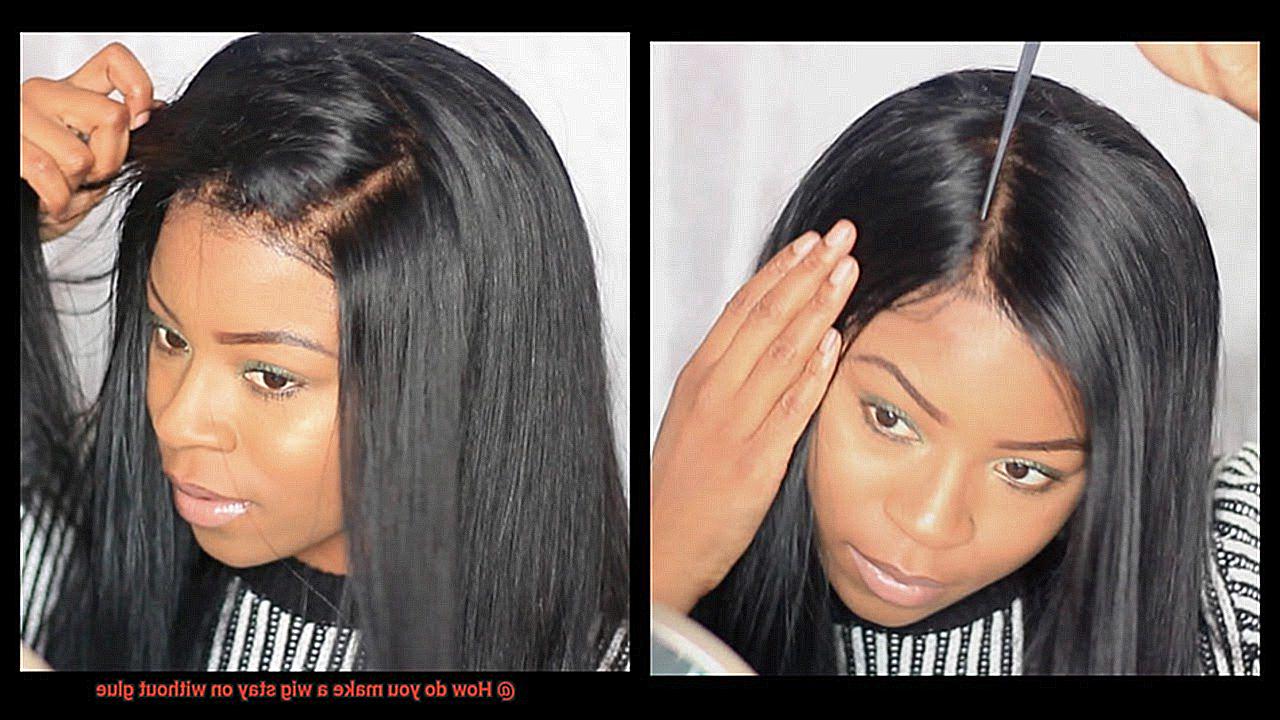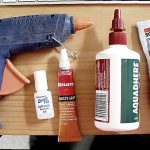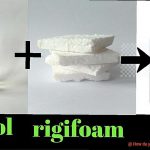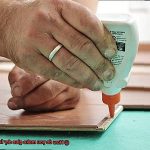Picture this: you slip on your favorite wig, ready to conquer the world with a flawless mane that turns heads at every corner. But wait, how do you make sure it stays put without resorting to glue? Fear not, my fellow wig enthusiasts. We’re about to embark on a journey into the realm of effortless wig security. Bid farewell to sticky situations and those dreaded scalp discomforts, because we’ve got the ultimate solution up our sleeves.
Get ready to rock your wigs with confidence as we unravel the secrets behind keeping them securely in place – no glue required. From adjustable straps that hug your head just right, to trusty clips and innovative wig grips, we’ll equip you with all the knowledge and tips you need for a flawless look that lasts.
So, let’s dive in and unlock the potential of glue-free perfection.
What is Glue and Why Should it be Avoided?
Contents
- 1 What is Glue and Why Should it be Avoided?
- 2 Alternative Methods for Keeping a Wig Secure
- 3 Wig Clips or Combs
- 4 Adjustable Straps or Hooks
- 5 Wig Grips or Bands
- 6 Bobby Pins
- 6.1 Step 1: Finding the Perfect Placement – A Foundation for Success
- 6.2 Step 2: Inserting the Bobby Pins – Anchoring Your Tresses
- 6.3 Step 3: Strategic Placement for Maximum Hold – A Pinning Masterpiece
- 6.4 Step 4: Comfort and Safety First – A Gentle Embrace
- 6.5 Step 5: Wigging Out with Confidence – Unleash Your Inner Diva
- 7 Sewing the Wig onto a Custom-Made Cap
- 8 Finding the Most Suitable Method for You
- 9 Conclusion
Glue may seem like an easy fix, but it’s time to reconsider. In this article, we’ll explore why glue should be avoided when securing a wig and offer alternative methods that are safer and more convenient.
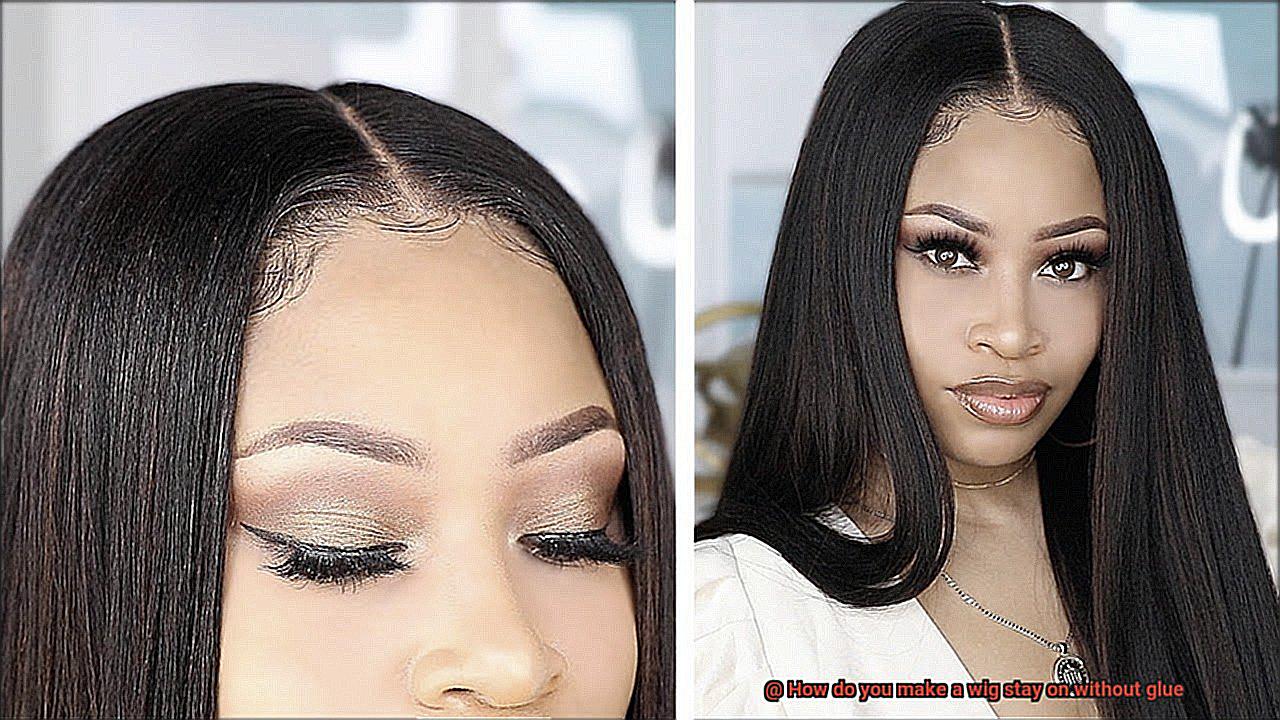
Understanding Glue and its Risks:
Glue, the sticky adhesive substance used for hair styling and wig application, can have detrimental effects on your natural hair and scalp. Its strong adhesive properties can lead to hair breakage and traction alopecia, causing hair loss due to excessive tension. Additionally, the chemicals in some glues can irritate the scalp, leading to discomfort and allergic reactions.
Removing Glued Wigs:
Removing a glued wig can be a challenging and painful process. The tight bond created by the glue can cause discomfort and potentially damage your natural hair, resulting in further hair loss and scalp irritation.
Longevity and Maintenance:
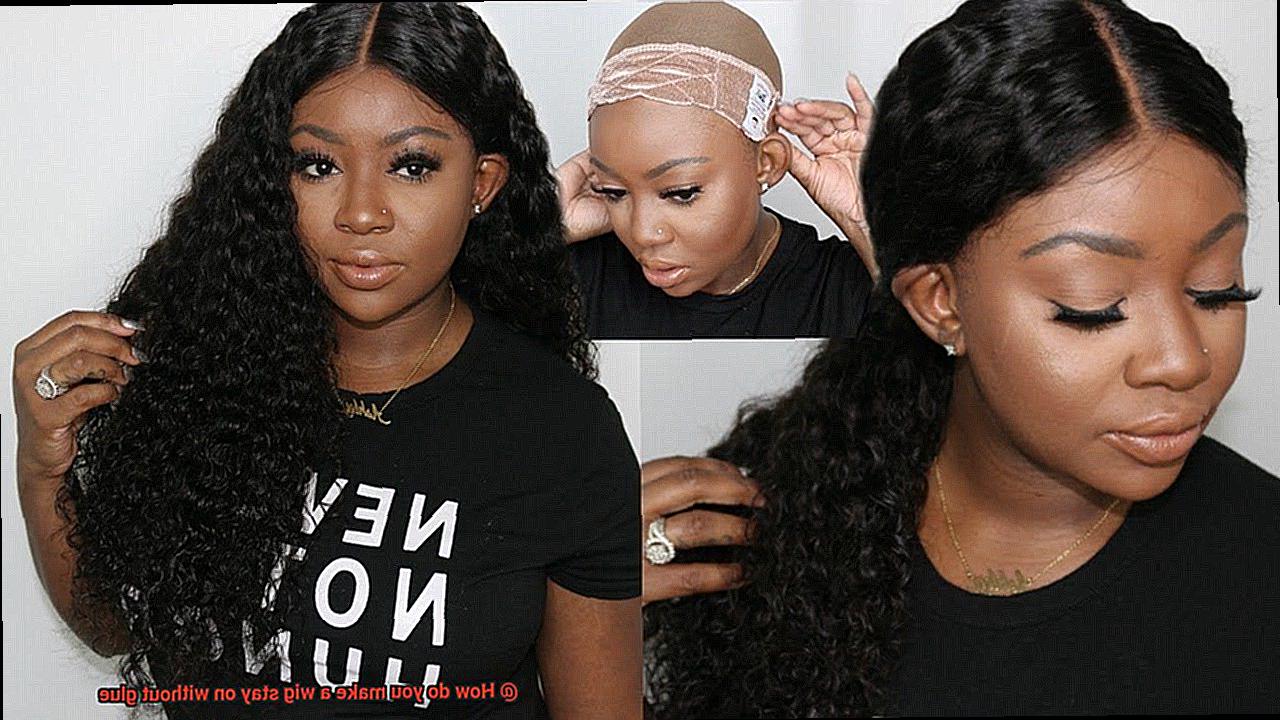
Glue residue build-up over time can make your wig look dull and unattractive. Cleaning and maintaining a glued wig requires special products to effectively remove the residue, adding to the time-consuming process.
Lack of Versatility:
Glued wigs limit flexibility and convenience. They cannot be easily adjusted or removed throughout the day, making them inconvenient for active individuals or those who prefer changing hairstyles frequently.
Alternative Methods:
Fortunately, there are safer and more convenient alternatives to glue for securing wigs. Wig clips or combs sewn onto the inside of the wig provide extra security. Adjustable straps or hooks offer a snug fit by tightening or loosening them according to your preference. Wig grips or bands made of silicone or velvet prevent slippage. Strategically placed bobby pins anchor the wig, while sewing the wig onto a custom-made cap ensures maximum security.
Alternative Methods for Keeping a Wig Secure
There are plenty of alternative methods that can keep your wig securely in place without the sticky mess. So sit back, relax, and get ready to discover these game-changing solutions.
First on the list are wig clips or combs. These nifty little accessories can be sewn onto the inside of your wig cap and then attached to your natural hair. Not only do they provide an extra layer of security, but they also prevent your wig from sliding or shifting throughout the day. No more embarrassing wig mishaps – hallelujah.
If clips aren’t your cup of tea, fear not. Wig tapes or adhesives specifically designed for those who can’t use glue are also available. These double-sided tapes can be applied to the perimeter of your wig cap, ensuring that it stays in place without any sticky residue. Talk about a win-win situation.
But wait, there’s more. For those who crave ultimate security, wig grips or bands are the way to go. Made of silicone or velvet material, these ingenious accessories can be worn underneath your wig cap to provide a firm grip and prevent any slipping or sliding. Say goodbye to constantly readjusting your wig – hello, peace of mind.
Feeling crafty? Why not try sewing your wig onto a matching wig cap? This method involves hand-sewing the wig onto the cap, creating a secure fit that mimics your natural hairline. Not only will it keep your wig in place, but it’ll also give you a more realistic look – talk about a win-win.
And let’s not forget about adjustable straps. These handy additions can be added to your wig cap, allowing you to tighten or loosen the fit as needed. It’s like having a customized wig just for you.
Remember, finding the right wig cap is essential for a secure fit. Look for one that is snug and made of breathable material to keep your wig in place without any discomfort.
Wig Clips or Combs
These handy accessories are the ultimate solution to keep your wig firmly in place, allowing you to confidently go about your day.
Let’s dive into the world of wig clips. These nifty little contraptions, available in metal or plastic, can be sewn onto the inside of your wig cap. With their teeth-like grip, they securely hold onto your natural hair, ensuring a snug fit. The number and placement of these clips will vary depending on the size and style of your wig. For larger wigs, distributing the weight evenly with multiple clips prevents any slipping mishaps.
Now, let’s switch gears and explore wig combs. These small comb-like attachments are also sewn onto the inside of your wig cap. Sporting their own set of teeth, they can be inserted into your natural hair for an extra layer of security. Just like wig clips, the number and placement of these combs depend on your wig’s size and style.
Both wig clips and combs offer a secure hold, keeping your wig intact even during vigorous activities. However, achieving a comfortable and natural-looking fit requires strategic positioning. Placing them too tightly or too far back may result in discomfort or an unnatural appearance.
When deciding between wig clips and combs, personal preference takes center stage. Some individuals may find one option more comfortable than the other, so it’s worth experimenting to see which works best for you. In fact, many people opt for a combination of both for maximum security.
Now, let’s take a moment to discuss glue as an alternative method for attaching wigs. While glue provides an incredibly secure hold, it also comes with its own set of drawbacks. The application process can be messy and time-consuming, not to mention the potential damage it may cause to your natural hair if not removed correctly. Additionally, some individuals may experience skin sensitivities or allergies to wig glue.
Adjustable Straps or Hooks
Are you tired of dealing with messy glue when it comes to securing your wig? Look no further, because adjustable straps or hooks might just be the solution you’ve been searching for. These nifty little tools, located inside the cap of the wig, allow you to customize the fit to your head shape and size. But which option is better: adjustable straps or hooks? Let’s explore the advantages and disadvantages of both in terms of functionality, cost, and durability.
Functionality:
- Adjustable Straps: One of the biggest advantages of using adjustable straps is the ability to achieve a snug and secure fit. No more worrying about your wig slipping or feeling loose throughout the day. You can tighten or loosen the wig to your desired level of comfort. This is especially beneficial if you plan on wearing the wig for extended periods or engaging in activities that require a lot of movement.
- Hooks: Like adjustable straps, hooks also provide a customizable fit. They allow you to adjust the tightness of the wig easily. However, some people find hooks less convenient to use compared to straps.
Cost:
- Adjustable Straps: When it comes to cost comparisons, adjustable straps are often more affordable than purchasing glue repeatedly. Glue can be quite expensive and may need to be replaced regularly, while adjustable straps are a one-time purchase that can last for multiple uses.
- Hooks: Hooks are generally priced similarly to adjustable straps, so there is not much difference in terms of cost.
Durability:
- Adjustable Straps: Adjustable straps are made from durable materials such as elastic, ensuring they can withstand frequent adjustments without losing their functionality. They are designed to last and provide a secure fit for an extended period.
- Hooks: Hooks are also made from durable materials but may be prone to wear and tear over time due to repeated use.
Wig Grips or Bands
Look no further. Wig grips and bands are here to transform your wig-wearing experience. These innovative accessories offer a secure and comfortable fit without the need for adhesive products. In this article, we will delve into the advantages and features of wig grips and bands, equipping you with all the information necessary to make an informed decision.
Unparalleled Comfort and Convenience:
- Wig grips, crafted from stretchable materials like nylon or spandex, ensure a snug fit that never compromises comfort.
- Wig bands, equipped with adjustable straps, can be tailored to your head shape and size, guaranteeing an impeccable fit.
- Both options distribute the weight of the wig evenly across your head, minimizing tension and discomfort during extended wear.
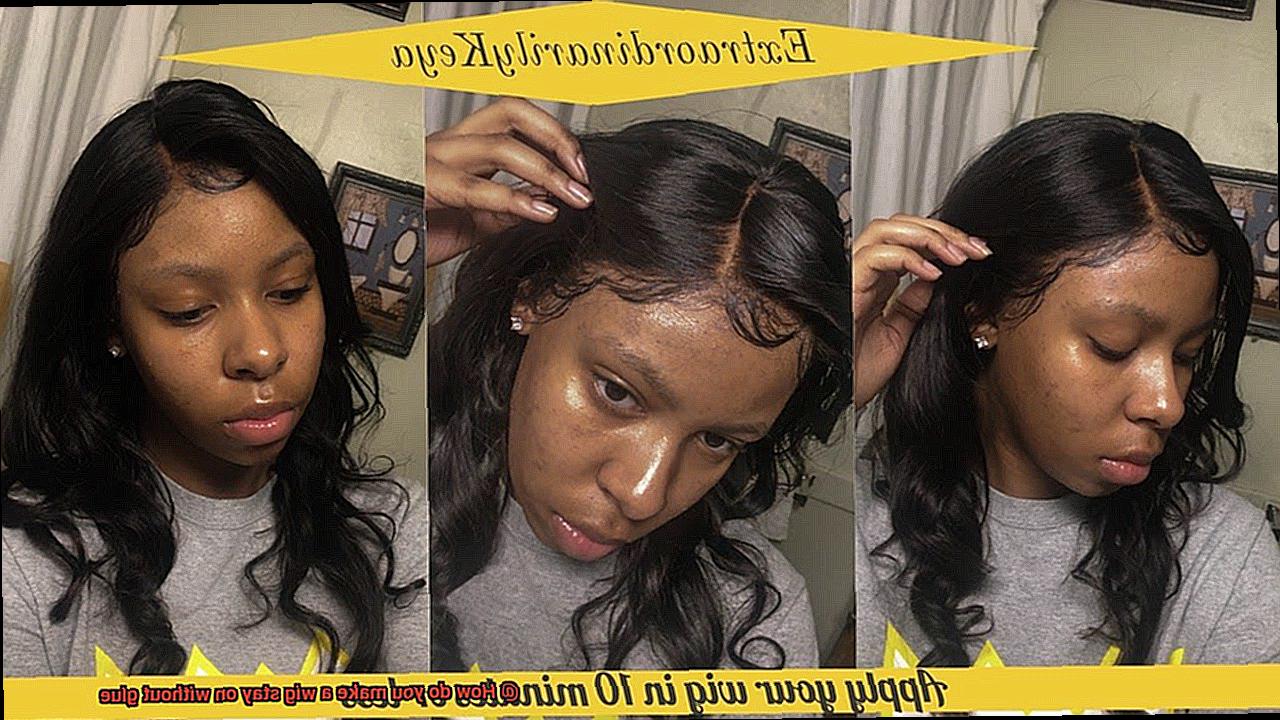
Universally Compatible with Different Wig Types:
- Wig grips and bands seamlessly accommodate both synthetic and human hair wigs, as well as full wigs and partial options like hair toppers or extensions.
- They provide unwavering stability, preventing any unwanted shifting or sliding during daily activities or even in gusty winds.
Effortless Application:
- Applying a wig grip or band is as simple as slipping on a headband or wrapping it around your head, ensuring a secure yet comfortable fit.
- Once in place, effortlessly position the wig over the grip or band, adjusting as needed for a flawlessly natural appearance.
A Myriad of Styles:
- Wig grips and bands come in a wide array of colors and styles to complement diverse skin tones and hair colors.
- Some options boast additional features such as built-in combs or Velcro closures, providing an extra layer of security.
Alternative Methods:
Should wig grips or bands not suit your preferences, fret not. Other glue-free alternatives exist, including double-sided wig tape, sewing in wig clips, or utilizing adjustable straps on the wig cap.
Bobby Pins
Wigs have revolutionized the world of hairstyling, offering endless possibilities for effortless transformations. However, for those who prefer not to use glue, finding a reliable and secure method to keep their wigs in place can be a challenge.
Enter bobby pins – the unsung heroes of wig wearers everywhere. In this comprehensive guide, we will delve into the art of using bobby pins to secure your wig flawlessly, ensuring a worry-free experience that allows you to slay any hairstyle with confidence.
Step 1: Finding the Perfect Placement – A Foundation for Success
The foundation of a flawless wig installation begins with finding the perfect placement on your head. Take your time to position the wig in the desired spot, ensuring it sits comfortably and looks natural. Once you’ve found that sweet spot, it’s time to bring out the trusty bobby pins.
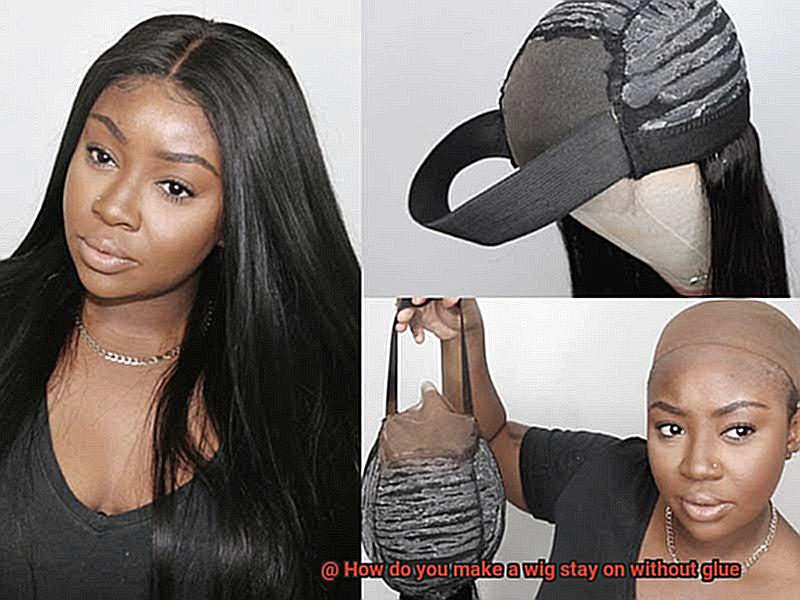
Step 2: Inserting the Bobby Pins – Anchoring Your Tresses
Gently take a bobby pin and insert it into the wig cap, catching a small section of your natural hair underneath. Glide the pin through both the wig cap and your hair, creating a secure hold that will withstand even the most vigorous activities. Repeat this process with multiple bobby pins, strategically placing them around the perimeter of the wig for maximum stability.
Step 3: Strategic Placement for Maximum Hold – A Pinning Masterpiece
To ensure an even distribution of tension and minimize any potential slippage, it’s essential to strategically place the bobby pins. Consider crossing two bobby pins over each other in an “X” shape for extra hold – a secret technique that distributes the weight of the wig evenly and provides unparalleled security.
Step 4: Comfort and Safety First – A Gentle Embrace
While securing your wig with bobby pins, always prioritize comfort and safety. Avoid placing the pins too tightly against your scalp or in areas that may cause discomfort or irritation. Remember, bobby pins should enhance your wig-wearing experience, not hinder it.
Step 5: Wigging Out with Confidence – Unleash Your Inner Diva
With the help of bobby pins, you have achieved the perfect balance of style and security. Whether you’re strutting down the red carpet or conquering your daily tasks, your wig will stay in place, allowing you to unleash your inner diva with confidence and grace.
Sewing the Wig onto a Custom-Made Cap
Well, I’ve got great news for you. Sewing your wig onto a custom-made cap is a fantastic alternative that provides a natural and comfortable fit. So let’s dive into the step-by-step process and get you on your way to a flawless wig-wearing experience.
First things first, you’ll need a custom-made cap that perfectly fits your head size and shape. Look for a cap made from stretchy materials like nylon or mesh to ensure flexibility and breathability. Once you have your cap, trim any excess lace along the hairline of your wig, giving you a seamless and natural look once everything is in place.
Now it’s time to position the wig onto the cap, aligning it with your natural hairline. Use clips or bobby pins temporarily to hold the wig in place while you sew. Grab a needle and thread that matches the color of your wig cap, and start sewing around the perimeter of the cap. You can begin at either the front or back, but remember to maintain an even tension as you go.
Make small stitches going through both the wig cap and the wig itself. Ensure secure stitches that are close together for a tight hold. Periodically check that the wig is aligned properly with your natural hairline – nobody wants a wonky-looking wig.
Continue sewing until you reach your starting point, tying off the thread securely so those stitches don’t come undone. Remove any temporary clips or bobby pins used during the process.
For extra security, consider sewing additional straps or combs onto the cap. Position them at various points like the sides or back for more stability and to prevent any wig shifting.
You’re now ready to confidently rock your wig without any messy glue or tape. Adjust the straps or combs as needed for a comfortable fit throughout the day.
Finding the Most Suitable Method for You
We have good news for you. There are several alternative methods to keep your wig secure without using any adhesive products. In this article, we will explore different options and help you determine the most suitable method for you.
Method 1: Wig Clips
Wig clips, small combs that can be sewn onto the inside of the wig cap, provide a secure hold by grasping onto your natural hair. The advantages of wig clips include easy attachment and removal, making them a popular choice. However, some people may find them uncomfortable or irritating, especially if they have sensitive scalps.
Method 2: Wig Grips or Bands
Wig grips or bands, stretchy bands made of silicone or fabric, create friction between the wig cap and your scalp, keeping the wig in place. Adjustable and suitable for people with hair loss or those who prefer not to use adhesives, wig grips offer a hassle-free alternative.
Method 3: Bobby Pins or Hairpins
Strategically placed bobby pins or hairpins secure the wig in place while allowing flexibility and customization. Adjust the number of pins according to your needs for a tailored fit. Remember to choose hairpins that match your hair color for a seamless blend with the wig.
Method 4: Wig Tapes
Wig tapes, double-sided adhesive tapes designed specifically for wig application, provide a strong hold without using glue. With different sizes and strengths available, choose the one that suits your needs best. Careful application is essential to avoid damage to the wig or natural hair.
Method 5: Wig Grip Bands
Wig grip bands come with an adjustable strap for added security. These bands prevent slipping and distribute the wig’s weight evenly, reducing discomfort or pressure on your scalp. Ideal for regular wig wearers or longer durations, wig grip bands ensure a confident and comfortable experience.
Determining the Most Suitable Method:
Finding the most suitable method for keeping your wig secure without glue is a matter of personal preference. Consider factors such as comfort, durability, and ease of application when making your decision. Trial and error may be necessary to find the method that works best for you.
Conclusion
In conclusion, there are numerous alternatives to using glue in order to keep your wig securely in place. Glue can be messy and time-consuming, not to mention the potential damage it can cause to your natural hair and scalp. Luckily, there are safer and more convenient options at your disposal.
One highly favored method involves utilizing wig clips or combs. These tiny accessories can be sewn onto the inside of the wig cap and then attached to your own hair for added security. By doing so, you can ensure that your wig stays put without any sliding or shifting throughout the day.
Another viable option is incorporating adjustable straps or hooks into your wig setup. These additions allow you to customize the fit of the wig according to your head shape and size. With adjustable straps, you have the freedom to tighten or loosen the wig for a snug fit that remains firmly in place.
Wig grips or bands made from silicone or velvet material also prove incredibly effective in keeping wigs secure. These accessories are worn beneath the wig cap and provide a robust grip that prevents any slippage from occurring.
For those seeking a more permanent solution, consider sewing the wig onto a custom-made cap. This method guarantees a natural-looking fit while providing maximum security.
Ultimately, determining which method works best for you depends on personal preference and comfort. It may take some trial and error before finding the perfect technique that keeps your wig securely in place without glue.

